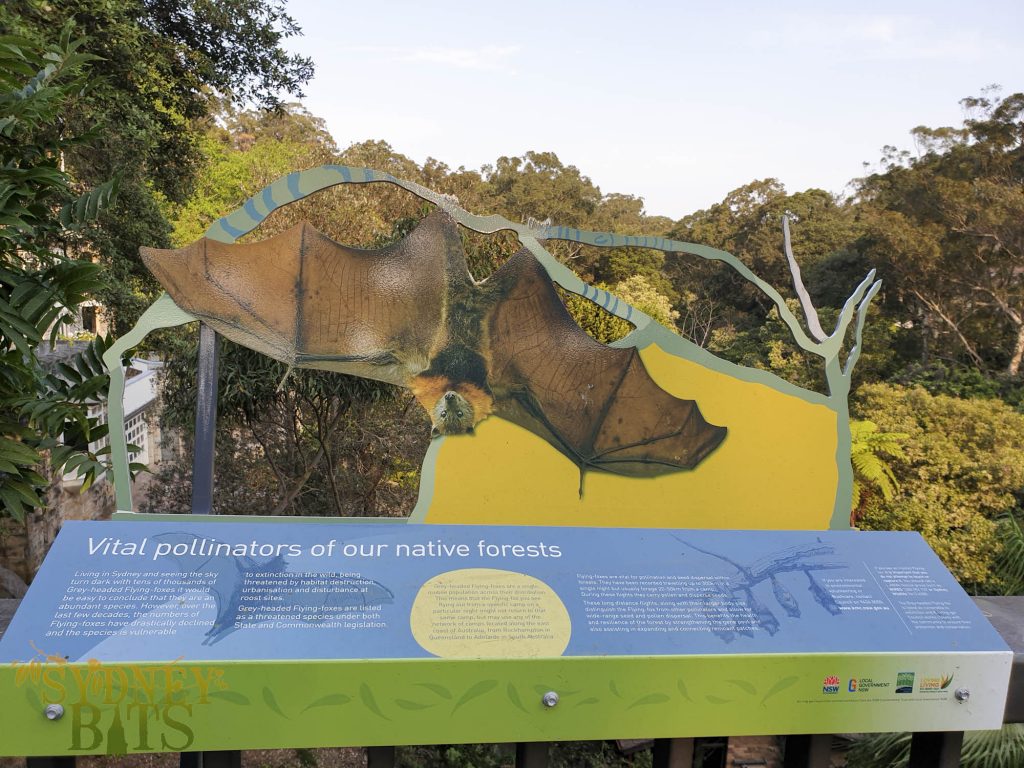Dear KBCS members and friends,
I’ve sat down a number of times over the past couple of weeks to write this, but events keep on catching up with me… it was meant to be a nice cheery look back at the past year, and look at where we were heading in the new year – but let’s face it, things have fairly suddenly got more than a little bit miserable, haven’t they?
So let’s start with some good bits…
Our education program is doing well. This is still one of the key parts of what we do – trying to educate the public about just how important bats are. Our online presence – through the Sydney Bats website, Sydney Bats Facebook page, and the Sarah’s Bats Facebook page, get the message out to a wide audience, and allow us to directly answer people’s questions.
Our education events, too, continue to attract large numbers of people, and we now have two (possibly three) new presenters trained to handle the flying-foxes, which has allowed us to start doing more events. We still have more requests than we can meet, but we’re getting there.


On a side note with the education flying-foxes, in November the Gospers Mountain fire was threatening the Australia Walkabout Wildlife Park at Calga, where the bats live. The RFS advised the park that if the wind
turned, the fire couldn’t be stopped, so the park management made the decision to evacuate all the animals… The bats were moved down to Lane Cove (an irony that will not be lost on older members!) and for a month were looked after by our bat handlers, assisted by some KBCS, SMWS, and WIRES members. Thanks Sarah, Nikie, and Haley for organising the evacuation and care!
On a local note, Council has replaced the informational signs on the Rosedale Rd bridge in Gordon with more modern and up-to-date signs.


Unfortunately, things go downhill from there. Work in the flying-fox reserve was progressing well, with more wallaby proof exclosures being installed, and in spite of the prolonged drought, the reserve looking good. The network of environmental monitoring stations (both online weather stations, and dataloggers) have been giving us invaluable data about the microclimate in various parts of the reserve. Then the short lived but very intense storm of 27 November hit…
Nancy has written a brief summation of the damage incurred (click here to read), but the reserve ended up a bit of a mess.
In a number of places, the canopy has opened right up, and trees have come down, flattening the undergrowth. All our instrumentation was untouched, and this has let us start to get an idea of the effects of the vegetation damage on the microclimate. It’s going to take time to understand the effects, but already we can see that one of the main areas that the bats used as a refuge on hot days is no longer cooler and moister than the camp area.
The fires currently ravaging eastern Australia have affected the bats in numbers of ways. Flying-foxes are lucky in that they can fly away from the fires, but at this time of year of course they are trying to carry young, as well. We’ll never know exactly just how much wildlife has perished in the fires; we do know that from around mid-November, flying-fox camps in non-affected areas swelled hugely as the animals moved around to try and find safe areas and food. Then the pup abandonments started… When food is scarce, or the animals are under extreme stress, flying-fox mothers will abandon their young. Normally they are incredibly good mothers, but if it becomes a matter of survival… So literally thousands of pups were abandoned, and died, with many orphaned animals being taken into care by wildlife carers – stretching resources to the limit.
Heatwaves have decimated camps as well. The camp in Adelaide lost over 10,000 animals over two days, and probably more a few days later; Yarra Bend camp in Melbourne lost over 4,000; and in the last week we’ve had as yet uncounted numbers of fatalities in the crowded camps in the Sydney and Hunter regions.
This has included mass casualties in the Ku-ring-gai flying-fox Reserve – usually a camp that is a safe refuge, but the combination of damaged vegetation, crowded camp, weakened animals, and incredible conditions (yesterday, 45 degrees Celsius, but with only 6% humidity) has resulted in fatalities where we don’t normally see them.

Initial estimates from multiple camps suggest that we have lost over half of this seasons’ young – probably more.
And the most intense part of summer, and the fire season, isn’t even here yet.
There are some pockets of refuge for our bats – at the moment the mid-north coast area has been only lightly burnt, doesn’t have huge active fires, and isn’t getting the extreme heat. Camps are very full, and the animals seem to be managing. For the moment. Again, the benefits of being able to move around your vast range to find safe places – however those safe places are getting smaller and smaller.
With all this, the role of our education and advocacy programs becomes even more important.
This year, we will need to do everything we can to support the wildlife carers who are on the front line of these disasters; run as many education programs as we can; and lobby politicians to actually do something for the environment in general and flying-foxes in particular.
Hoping that this year brings us some good news…
Cheers,
Tim Pearson
Chair, Sydney Bats